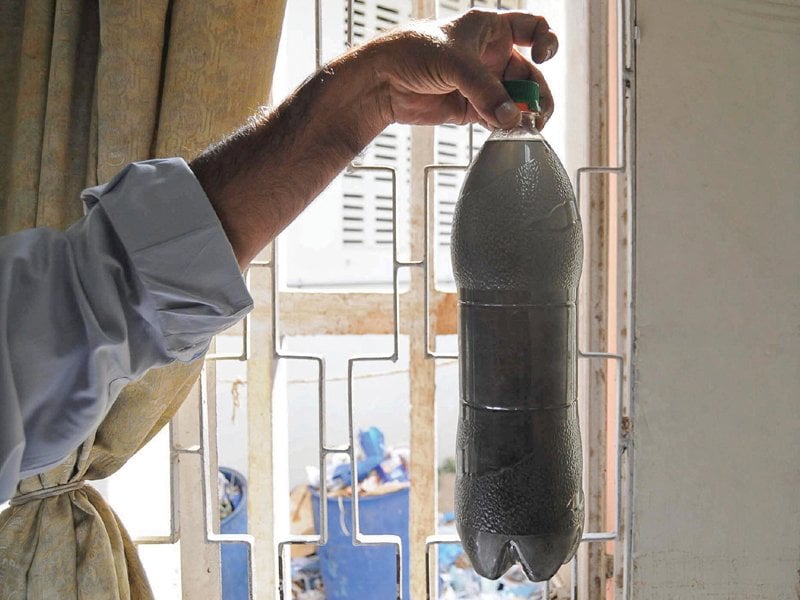
In recent months, a 14-year-old boy and six-year-old girl died after remaining ill with acute diarrhoea for some days in Pakistan’s Karachi.
The incident exposes that contaminated tap water is still a major problem in Pakistan, especially in Karachi, the capital city of the Pakistani province of Sindh.
According to the country’s leading daily Dawn, the two children, who died of diarrhoea on April 12, the first day of Eid, were the residents of Nazimabad in Karachi, and the water supplied to their locality by the water board was visibly contaminated and stinking, and had worms that could be seen with the naked eye.
Earlier, in the first week of April, five kids of a family died after drinking contaminated water from a borewell in Sanghar district of Sindh province, as reported by Pakistan’s ARY News.
As per local media reports, the children, who lost their lives, were aged between four to eight. They were reportedly taken to hospital after complaining of fever, diarrhoea, and vomiting.
As per a comment published in Dawn, worms in water is the worst type of drinking water pollution in Pakistan’s Karachi.
The team of the health department and water board distributed chlorine tablets among the residents, most of them illiterate, reports Dawn.
Chlorination of drinking water — the process of adding chlorine to drinking water to kill parasites, bacteria, and viruses — is not that simple as a number of parameters impact the chlorination process.
As per Dawn, chlorination will not be effective if the turbidity of water is more than 5ntu (nephelometric turbidity units), and this is because the suspended particles protect microorganisms, which embed themselves within the particles, to escape the disinfection.
Drinking water in Karachi is turbid (turbidity greater than 10 ntu), and it is useless to waste chlorine on such waters, reports said.
For chlorination to be effective, turbidity must be brought to 1ntu.
Last year, The Express Tribune reported, citing a chemical analysis conducted at the Karachi Water and Sewerage Corporation (KWSC) laboratory, that the tap water supplied to the residents of Karachi is extremely contaminated and unfit for human consumption.
The lab test also revealed the presence of E. coli, coliform bacteria, and other harmful pathogens in the tap water.
According to The Express Tribune, KWSC collected 137 water samples from different neighbourhoods of the city for the chemical analysis, and after lab test, it found 90 percent of these samples lacked chlorine.
This lack of chlorine in drinking water may explain why 11 people lost their lives to the Naegleria fowleri, also known as brain-eating amoeba, in 2023, reports The Express Tribune.
Few years ago, Dialogue Earth reported that 91 percent of Karachi’s water was unsafe for drinking, while 83.5 percent water in 14 out of 29 districts in Sindh was unfit to drink.
According to a journal published by the National Library of Medicine (NLM), the world’s largest biomedical library and a leader in research in computational health informatics, in Pakistan, 74 children out of 1000 lose their lives annually due to diarrhoeal illness.
In the South Asian country of over 225 million people, 60 percent of infant and child deaths are caused by diarrhoea, while children under 5 comprise only 15 percent of the population, yet make up 50 percent of the mortality rate.
As per the NLM journal, these statistics do not reflect the true situation due to a lack of a functioning disease surveillance system, as well as inadequate data on births and deaths.
Pakistan has the highest ratio in Asia for infant mortality from diarrhoea, while the World Health Organization (WHO) has ranked Pakistan 23 in terms of childhood mortality caused by diarrhoeal illness, with almost 6.4 million cases of paediatric diarrhoea annually.
One way to curb this rise in diarrhoeal diseases especially in children is to establish educational programmes throughout schools in the country to enlighten the public about healthy safety measures, and the first step is to adhere correctly to a theory or model of health education, according to the NLM journal.
As per the journal, only 20 percent of the Pakistani population have access to clean water, while 50 percent of all diseases and 40 percent of all deaths recorded in the country are due to utilization of polluted water.
More than 66 percent of Pakistani households drink water contaminated with bacteria, resulting in rampant diarrheal illness amongst other diseases such as hepatitis, said the report, adding that contaminated water carries various pathogens causing diarrhoeal disease, including cholera, amoebiasis, gastroenteritis, giardiasis, and campylobacteriosis.
Another leading contributor to diarrhoea amongst infants in the South Asian nation is the lack of proper breastfeeding.
According to the report, babies who are breastfed are proven to have stronger immune systems and less diarrhoeal episodes and gastroenteritis, also known as stomach flu.
Only 37 percent of the country’s women breastfeed their infants exclusively for six months, and lack of breastfeeding is correlated with a 165 percent rise in the frequency of diarrhoeal episodes amongst infants under six months.
In comparison to those exclusively breastfed, infants who were not breastfed are 15 times more likely to lose their lives due to diarrhoea, according to the NLM journal.
The report opined that proper awareness and empowerment of mothers is crucial for the betterment of their children.
Closing gender gaps along with providing economic opportunities for women’s entrepreneurship may positively impact their children’s lives, the report read.
However, the journal suggests that the provision of safe drinking water, the proper use of Integrated Management of Newborn and Childhood Illnesses (IMNCI), adequate awareness of the benefits of breastfeeding, the use of correct rehydration techniques such as Oral Rehydration Therapy, and the crucial implementation of the EPI vaccination schedule can curb this sharp increase in diarrhoeal cases.
(ENDS)






